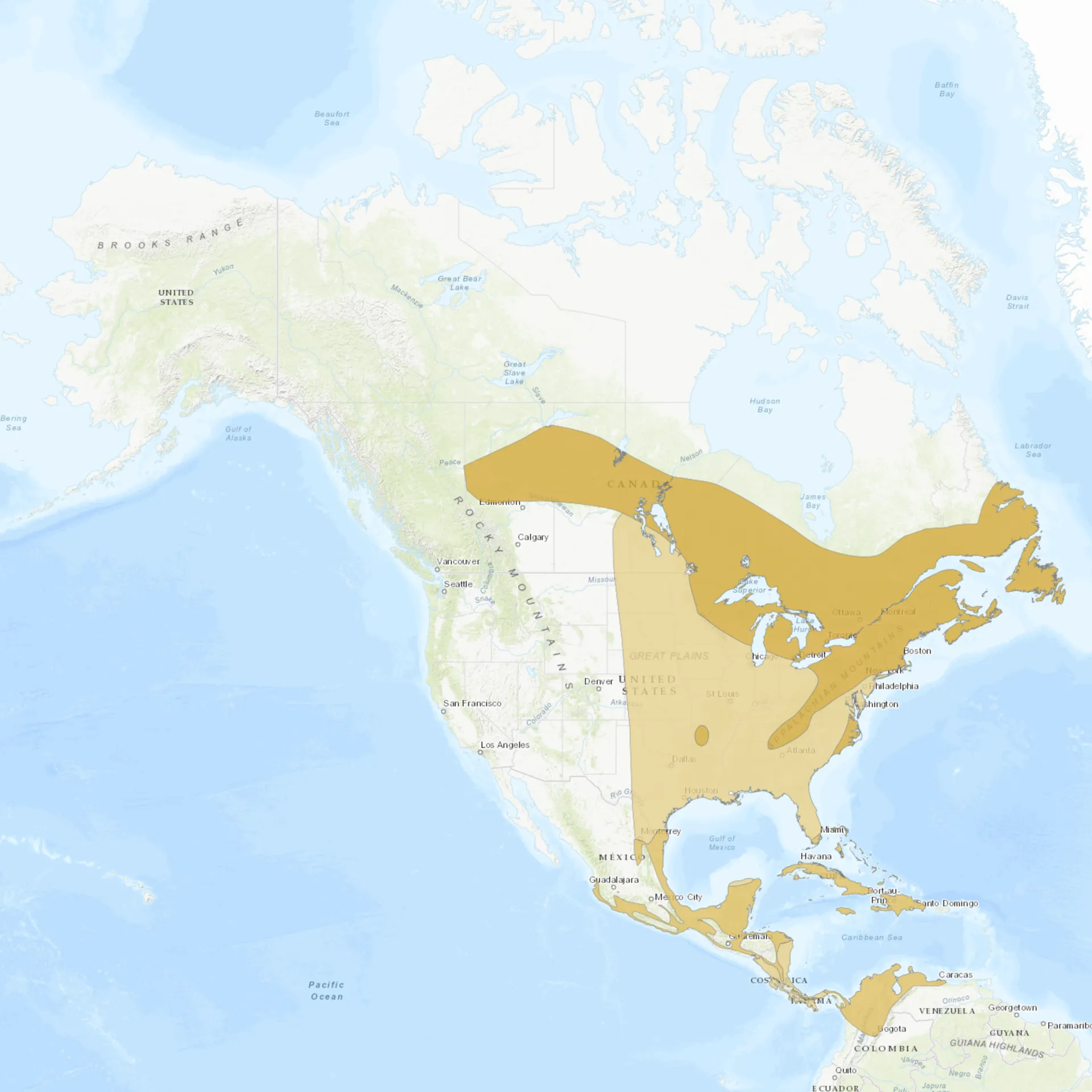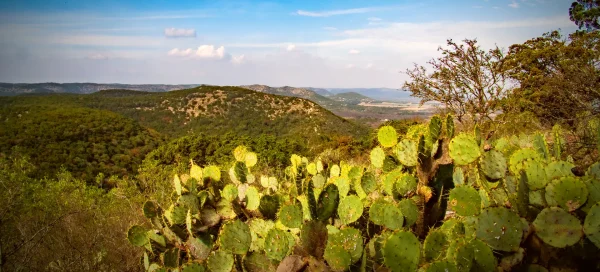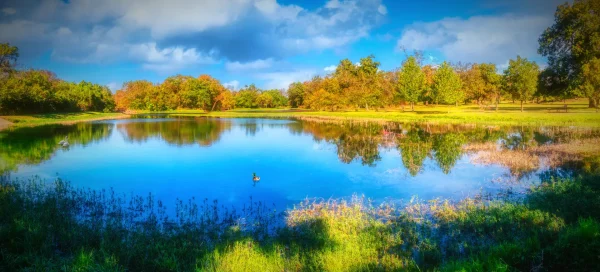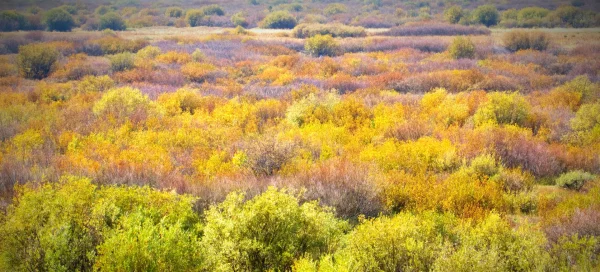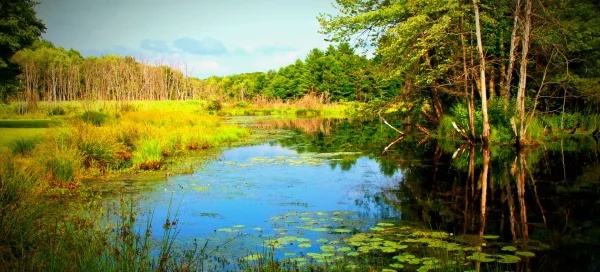Overview
The Black-throated Green Warbler (Setophaga virus) is a small songbird known for its distinctive appearance and melodious song. Characterized by its olive-green upperparts and yellow face, this warbler has a black throat and white underparts with black streaks on its flanks, which are most prominent in males. Females and juveniles are more subdued in color but share the same general pattern. These birds are highly active, flitting through tree canopies for insects and spiders, their primary food source.
The Black-throated Green Warbler is a migratory species, breeding in the forests of northeastern North America and wintering in Central America and the Caribbean. During migration, they can be seen in various forested or shrubby habitats, often joining mixed-species feeding flocks. Their song, a persistent “zee zee zee zoo zee,” is a familiar sound in their breeding range, contributing to the auditory landscape of North American forests in spring and summer. Conservation efforts have helped stabilize their populations, but habitat loss and fragmentation remain threats.
This bird plays a significant role in ecosystem dynamics by controlling insect populations and acting as a bioindicator for forest health. The Black-throated Green Warbler’s breeding habitat includes mixed or coniferous forests, particularly those with a dense canopy where they build their nests and forage. Their presence in various forest types highlights their adaptability and the importance of diverse, healthy forests for avian species.
Taxonomy
Kingdom
Phylum
Class
Order
Family
Genus
Species
Type
Current distribution:
During the breeding season, the Black-throated Green Warbler is found throughout the northeastern United States, extending into southeastern Canada and the Appalachian Mountains. Its breeding range encompasses forests from Minnesota and Ontario eastward to the Atlantic coast and southward along the Appalachian Mountains.
In winter, the species migrates to Central America and the northern parts of South America, including Colombia, Venezuela, and the West Indies. This broad wintering range includes a variety of forested habitats, from lowland tropical forests to mountain regions, demonstrating the species' adaptability to different environmental conditions.
Physical Description:
The Black-throated Green Warbler is a small, brightly colored bird. It is notable for its length of about 4.5 to 5 inches (11 to 13 cm) and wingspan of 7.5 to 8 inches (19 to 20 cm). Adults are distinguished by olive-green upperparts and a vivid yellow face, complemented by a black throat and upper breast in males. In contrast, females and juveniles display paler coloration and less pronounced markings.
Their underparts are predominantly white, adorned with black streaks along the sides, adding to their distinctive appearance. Additionally, they possess two white wing bars on each wing, contributing to their visibility during flight. The bird’s tail is short and square, featuring white spots on the outer feathers that become particularly noticeable when the tail is spread or during flight.

Lifespan: Wild: ~5 Years || Captivity: ~10 Years

Weight: Male & Female: 0.3-0.4 oz (8-11 g)

Length: Male & Female: 4.7-5.1 in (12-13 cm)

Wingspan: Male & Female: 7.5-8.7 in (19-22 cm)

Top Speed: Unknown
Characteristic:
Native Habitat:
The Black-throated Green Warbler breeds in the northeastern United States and southeastern Canada. It favors deciduous and mixed forests, especially those with a significant component of conifers. Their breeding habitats are characterized by mature forests with dense canopy cover, which provides ample foraging opportunities and nesting sites.
In winter, they migrate to the tropics, spending the non-breeding season in forests and woodlands from Mexico to northern South America. The winter habitats are similar in structure to their breeding grounds, with a preference for forested areas that offer protection and food resources. This migratory pattern highlights the bird’s dependence on diverse forested environments across the Americas.
Climate Zones:
Biomes:
Biogeographical Realms:
Continents:
Countries:
Diet:
Diet & Feeding Habits:
The Black-throated Green Warbler primarily feeds on insects and spiders, categorizing it as an insectivorous bird. It actively forages in the canopy and middle levels of forests, frequently becoming part of mixed-species feeding flocks when not in the breeding season. Their diverse diet consists of caterpillars, flies, beetles, and aphids, which they skillfully pick from leaves and branches or catch in mid-air.
During the breeding season, their feeding habits serve an essential ecological function by controlling insect populations. This activity supports the health and stability of forest ecosystems. Thus, the presence of the Black-throated Green Warbler plays a crucial role in maintaining the balance within their habitat.
Mating Behavior:
Mating Description:
The Black-throated Green Warbler exhibits a monogamous mating system, forming pairs during the breeding season. Males attract females through song and displays, establishing territories they defend vigorously against rivals. Nesting occurs in trees, where the female builds a cup-shaped nest out of twigs, grass, and moss camouflaged within dense foliage.
Eggs are laid in late spring to early summer, with clutch sizes ranging from 3 to 5 eggs. Both parents participate in feeding the chicks, although the female primarily incubates the eggs. The young fledge about 10 days after hatching but remain dependent on their parents for several weeks. This breeding behavior underscores the importance of mature, undisturbed forests for successful reproduction.
Reproduction Season:
Birth Type:
Pregnancy Duration:
Female Name:
Male Name:
Baby Name:
Social Structure Description:
During the breeding season, the black-throated green warbler is primarily solitary or found in pairs, focusing on nesting and raising its young. It may join mixed-species feeding flocks outside the breeding season, demonstrating social flexibility. These flocks allow individuals to benefit from increased vigilance and potentially greater efficiency in finding food.
Black-throated Green Warblers may form loose aggregations during migration, especially in favorable stopover habitats. These gatherings are temporary, with birds continuing their journey independently. This behavior indicates a balance between social interaction for survival benefits and maintaining territoriality and independence during critical life stages.
Groups:
Conservation Status:
Population Trend:
The Black-throated Green Warbler is considered to have a stable population, with no immediate threats leading to a significant decline. This stability is attributed to the bird’s wide breeding range and adaptability to forested environments. However, local populations may experience fluctuations due to habitat loss, changes in forest composition, and other environmental factors.
Conservation measures have focused on preserving mature forest habitats in breeding and wintering ranges. Monitoring populations and habitats is crucial for detecting changes and implementing conservation strategies. The species benefits from protected areas that encompass critical habitats, ensuring essential resources and breeding sites are preserved.
Population Threats:
Habitat loss and fragmentation are the primary threats to the Black-throated Green Warbler, particularly due to logging, agriculture, and urban development. These activities reduce the availability of suitable breeding and wintering habitats, impacting the bird’s ability to find food and nesting sites. Climate change also poses a threat, potentially altering the distribution of suitable habitats and affecting migration patterns.
Pesticide use and pollution can reduce insect populations, the warbler’s primary food source, further challenging their survival. Conservation efforts must address these threats to maintain stable populations and ensure the species’ long-term survival.
Conservation Efforts:
Conservation efforts for the Black-throated Green Warbler include habitat protection and restoration, particularly in breeding and wintering areas. Protected areas and national parks play a significant role in conserving essential habitats. Initiatives to promote sustainable forestry practices help mitigate the impact of logging by maintaining forest structure and diversity.
Research and monitoring programs are crucial for understanding population trends and the effects of environmental changes on the species. Conservation organizations collaborate with governments and local communities to raise awareness and implement conservation actions. These collective efforts aim to ensure the Black-throated Green Warbler continues to thrive across its range.
Additional Resources:
Fun Facts
- The Black-throated Green Warbler can sing two songs: one primarily for establishing territory and another for attracting a mate.
- These warblers undertake long migratory journeys despite their small size, traveling thousands of miles between their breeding and wintering grounds.
- Their nests are so well camouflaged that they are often difficult for predators and humans to find.
- This species is one of the more easily observed warblers in its habitat, thanks to its habit of foraging and singing in the upper parts of trees.
- The Black-throated Green Warbler’s vibrant yellow face is a distinguishing feature that makes it easily recognizable among bird watchers.
- They are known to hybridize with Townsend’s Warbler in areas where their ranges overlap, producing offspring with mixed plumage characteristics.
- Insectivorous diets make them natural pest controllers, benefiting forests and human agriculture indirectly.
- The male’s vibrant song is considered one of the most beautiful among North American warblers.
- Researchers use the presence of Black-throated Green Warblers as an indicator of forest health and biodiversity.
- Despite their name, not all individuals have a black throat; this feature is most pronounced in adult males.


